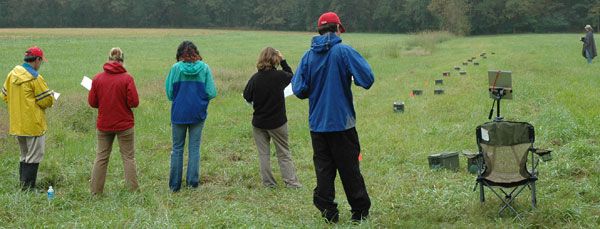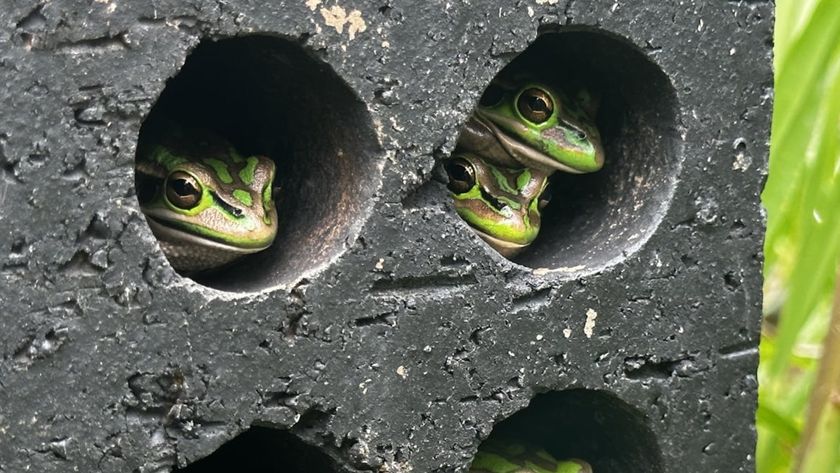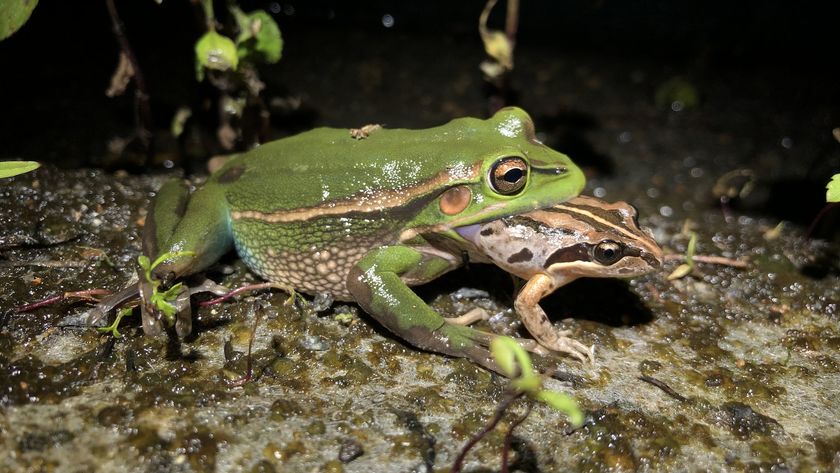
'Ribbit Radio' Helping to Root Out Frog-census Errors

You may not be able to catch any tunes on Ribbit Radio, but the system itself will help catch errors in a survey of frogs and other amphibians throughout North America.
The survey, started by the U.S. Geological Survey and called the North American Amphibian Monitoring Program, relies on volunteers who collect information on the diversity and populations of various species based on the sounds the volunteers hear.
NAAMP volunteers travel to sample locations and listen for frog sounds during specific seasons. They estimate the sizes of the populations based on what they hear, as well as which different types of amphibian species are in the area. They then submit all this information to the USGS.
Recent research has shown, however, that human error is not uncommon and can greatly alter the outcome of these surveys. Volunteers may think they're hearing a chorus of frogs of one species, when the calls may in fact be coming from another, a team from North Carolina State University has found.
"These tests are sensitive to misidentification errors; they can really throw data off. The method is subject to judgment errors and biases," said Ted Simons of N.C. State. That is where his "Ribbit Radio," as he calls it, and fellow researchers come in.
Simon and his team decided to adapt an existing Bird Radio system, which he had previously used to test the accuracy of bird censuses, to work for frogs. The remotely controlled speakers used for the radio were set up in a field, and frog calls were played over them to test the accuracy of the identifications of the volunteers collecting information.
"We used 600 individuals, and tried to determine how well people could identify particular species, and if they could identify one specific call out of a chorus of species," Simons said.
Sign up for the Live Science daily newsletter now
Get the world’s most fascinating discoveries delivered straight to your inbox.
Once the researchers sat down to analyze the data, they noticed a very high amount of false positives, in which volunteers would hear the call for a frog when one hadn't been played. The researchers also were noticing calls from species that Ribbit Radio didn't have in its repertoire.
For the amphibian survey, this could be a problem. NAAMP relies on establishing whether or not a species is present in a given area. The USGS says it is currently taking steps to improve volunteer training, in the hopes that it will make volunteers more accurate listeners.
In the past few years, the value of NAAMP has become more and more evident as scientists have realized that amphibian populations respond very quickly to pollution and the deterioration of their environment, putting many species in danger of extinction.
The idea of NAAMP is that through careful recording and monitoring of amphibian species in different areas, changes within the population of these creatures could be noted and trends observed over time.
"Getting a better understanding on how misidentification happens could help improve estimates and better handle the uncertainty that comes with any ear-related survey," Simons said.
The study of the survey is detailed in the August issue of Ecology.












